Leptin-STAT3-G9a Signaling Promotes Obesity-Mediated Breast Cancer Progression
- PMID: 25840984
- PMCID: PMC4694051
- DOI: 10.1158/0008-5472.CAN-14-3076
Leptin-STAT3-G9a Signaling Promotes Obesity-Mediated Breast Cancer Progression
Abstract
Obesity has been linked to breast cancer progression but the underlying mechanisms remain obscure. Here we report how leptin, an obesity-associated adipokine, regulates a transcriptional pathway to silence a genetic program of epithelial homeostasis in breast cancer stem-like cells (CSC) that promotes malignant progression. Using genome-wide ChIP-seq and RNA expression profiling, we defined a role for activated STAT3 and G9a histone methyltransferase in epigenetic silencing of miR-200c, which promotes the formation of breast CSCs defined by elevated cell surface levels of the leptin receptor (OBR(hi)). Inhibiting the STAT3/G9a pathway restored expression of miR-200c, which in turn reversed the CSC phenotype to a more differentiated epithelial phenotype. In a rat model of breast cancer driven by diet-induced obesity, STAT3 blockade suppressed the CSC-like OBR(hi) population and abrogated tumor progression. Together, our results show how targeting STAT3-G9a signaling regulates CSC plasticity during obesity-related breast cancer progression, suggesting a novel therapeutic paradigm to suppress CSC pools and limit breast malignancy.
©2015 American Association for Cancer Research.
Figures
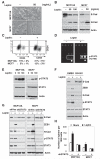
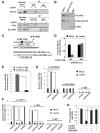
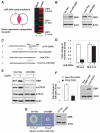
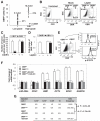
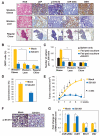
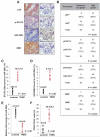

Comment in
-
Findings of Research Misconduct.Fed Regist. 2022 Dec 16;87(241):77128-77129. Fed Regist. 2022. PMID: 36561292 Free PMC article. No abstract available.
Similar articles
-
STAT3 induces G9a to exacerbate HER3 expression for the survival of epidermal growth factor receptor-tyrosine kinase inhibitors in lung cancers.BMC Cancer. 2019 Oct 16;19(1):959. doi: 10.1186/s12885-019-6217-9. BMC Cancer. 2019. PMID: 31619200 Free PMC article.
-
Histone methyltransferase G9a promotes liver cancer development by epigenetic silencing of tumor suppressor gene RARRES3.J Hepatol. 2017 Oct;67(4):758-769. doi: 10.1016/j.jhep.2017.05.015. Epub 2017 May 19. J Hepatol. 2017. PMID: 28532996
-
G9a regulates breast cancer growth by modulating iron homeostasis through the repression of ferroxidase hephaestin.Nat Commun. 2017 Aug 17;8(1):274. doi: 10.1038/s41467-017-00350-9. Nat Commun. 2017. PMID: 28819251 Free PMC article.
-
Obesity as a Risk Factor for Breast Cancer-The Role of miRNA.Int J Mol Sci. 2022 Dec 10;23(24):15683. doi: 10.3390/ijms232415683. Int J Mol Sci. 2022. PMID: 36555323 Free PMC article. Review.
-
Role of MicroRNA Regulation in Obesity-Associated Breast Cancer: Nutritional Perspectives.Adv Nutr. 2017 Nov 15;8(6):868-888. doi: 10.3945/an.117.015800. Print 2017 Nov. Adv Nutr. 2017. PMID: 29141971 Free PMC article. Review.
Cited by
-
Diabetes-associated dysregulated cytokines and cancer.Integr Cancer Sci Ther. 2016 Feb;3(1):370-378. doi: 10.15761/ICST.1000173. Epub 2016 Feb 15. Integr Cancer Sci Ther. 2016. PMID: 29930868 Free PMC article.
-
Mechanisms contributing to adverse outcomes of COVID-19 in obesity.Mol Cell Biochem. 2022 Apr;477(4):1155-1193. doi: 10.1007/s11010-022-04356-w. Epub 2022 Jan 27. Mol Cell Biochem. 2022. PMID: 35084674 Free PMC article. Review.
-
Retinoic acid directs breast cancer cell state changes through regulation of TET2-PKCζ pathway.Oncogene. 2017 Jun 1;36(22):3193-3206. doi: 10.1038/onc.2016.467. Epub 2017 Feb 20. Oncogene. 2017. PMID: 28218902 Free PMC article.
-
High Fat Diet-induced Breast Cancer Model in Rat.Bio Protoc. 2016 Jul 5;6(13):e1852. doi: 10.21769/BioProtoc.1852. Bio Protoc. 2016. PMID: 28573159 Free PMC article.
-
HN1L Promotes Triple-Negative Breast Cancer Stem Cells through LEPR-STAT3 Pathway.Stem Cell Reports. 2018 Jan 9;10(1):212-227. doi: 10.1016/j.stemcr.2017.11.010. Epub 2017 Dec 14. Stem Cell Reports. 2018. PMID: 29249663 Free PMC article.
References
Publication types
MeSH terms
Substances
Grants and funding
LinkOut - more resources
Full Text Sources
Other Literature Sources
Medical
Miscellaneous

